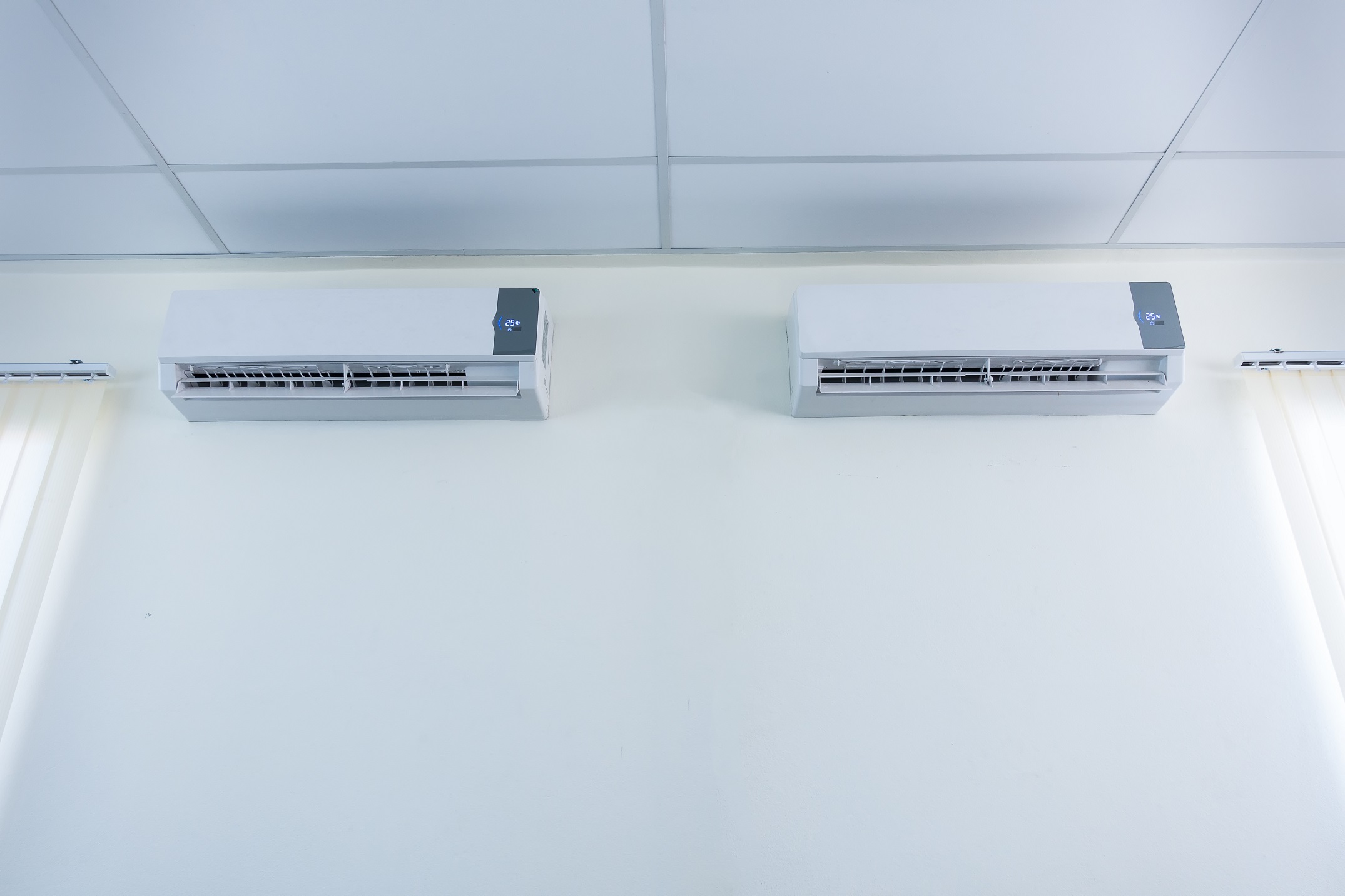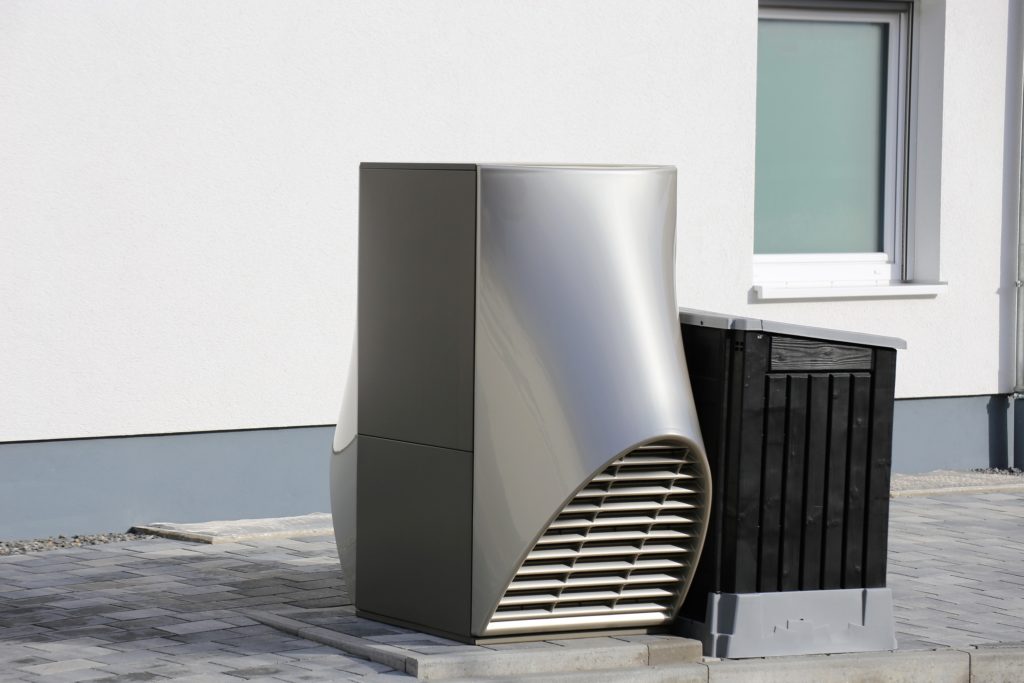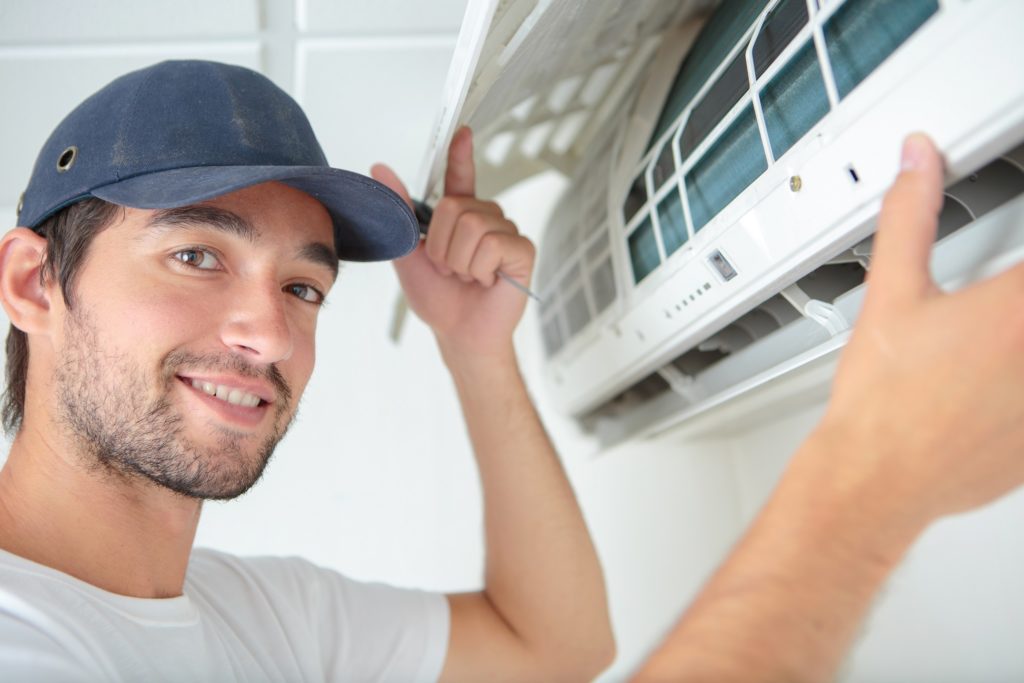New HVAC Installation: What Does a New HVAC System Include?
There are several different types of HVAC systems that you can choose from for a new HVAC installation at your home. The type of system you select will be based on several different factors. It is important to review each of these factors with your AC repair and installation technician to ensure the system you select is the best one for your home.
1. Size of Home
The size of your home will determine the size of the HVAC system. It is important to make sure the size of the unit is matched to the size of your home. You want the system to be able to meet your heating and cooling temperature preferences.
It is worth noting that getting a bigger HVAC system than you need is not going to provide any additional benefits. The system will still provide the same heating and cooling as a properly sized HVAC system. The only difference you will see is an increase in your energy bills from operating a larger system.
On the other hand, if the new HVAC system is too small to meet your heating and cooling needs, the system will run more often. On those hot Texas summer days, an undersized unit runs almost constantly to try to keep your home cooled.
Not only is this not very energy-efficient, but it also places a higher level of wear and tear on the system. Since the system runs more often, it will have a much shorter useful lifespan.
2. Duct or Ductless Home
Whether your home has existing air ducts or not is another factor you need to consider when selecting a new heating and cooling system. If your home already has existing ductwork, then you will want to choose a duct-based system.
If your home does not have ductwork, you can either choose a ductless HVAC system or have ducts installed. Just keep in mind that adding ductwork to your home will require you have sufficient space.
In addition, installing ductwork will require removing parts of the walls, flooring, and other areas of the home so it can be installed correctly. The costs of installing ductwork will also increase the total HVAC installation cost. This is why most people without ductwork in their homes will opt for a modern ductless HVAC system instead.

3. Current System
Your current HVAC system does have some influence on what type of new system you will get. If you have a split system, then you may only need to have a new AC installation service to replace just the air conditioner. Conversely, you might only need heating installation if your furnace needs to be replaced but the air conditioner is still working.
Types of New HVAC Systems
There are five general types of new HVAC systems you can choose from for your new HVAC installation. Let’s take a look at each one and what is included with the system.
1. Packaged HVAC Systems
Packaged HVAC systems are quite common in Texas and most southern states. They combine your cooling and heating into a single unit that is installed on the exterior of the home. The system is a duct-type system that connects to the existing ductwork.
Common components found with a packaged HVAC system are:
- Heating Unit: The heating unit can be either gas or electric.
- Cooling Unit: The cooling unit is electric.
- Blower Motor: The blower motor helps force the heated or cooled air into the air ducts and the home.
The primary benefit of a packaged HVAC system is that you do not need to worry about losing any indoor space for the system. With everything contained in a single unit outside the home, you will also notice the system doesn’t make as much noise as other types of HVAC systems.
2. Split HVAC System
A split HVAC system has the heating unit inside the house and the cooling unit outside the house. The air handler unit is also installed inside. Each unit is then connected together so that the air handler, blower motor, and ductwork can be shared between the two systems.
The heating unit of a split HVAC system can be either electric or gas. The cooling unit is electric. When you turn on the heat, just the furnace side of the system runs to heat the home. Alternatively, when you turn on the AC, just the AC unit runs to cool your home.
The main benefit of a split HVAC system is you do not have to replace both the furnace and air conditioner at the same time. If you need a new AC, you just replace either the AC unit or the furnace, if that needs to be replaced.
However, it can be beneficial to replace both the furnace and AC at the same time. If your current system is more than ten years old, there have been many energy-efficient improvements made on new complete split HVAC systems. Replacing both parts of the systems would allow you to enjoy these energy-saving features.

3. Duct-Type Heat Pump System
A heat pump is similar to a packaged system since it can provide both heating and cooling functions in a single unit. Unlike a packaged system, there is an indoor air handling unit that contains the blower motor which is installed inside the home. A heat pump is also connected to existing ductwork inside the home.
4. Ductless Heat Pump System
Another type of heat pump system you could have installed is a ductless system. This system is well-suited for homes without existing air ducts. There is an outdoor unit that is connected to individual air handling units installed in each room of the home that you want to heat and cool.
One of the benefits of a ductless heat pump system is it allows you to set individual temperatures for each room. For instance, you could have it a bit cooler in the living room and a little warmer in the bedroom. Another benefit of a ductless heat pump system is it heats and cools the home without the need for a separate furnace.
5. Ductless Split and Mini-Split AC Systems
Ductless split and mini-split AC systems are also designed for homes without existing air ducts. The key difference between this type of system and a ductless heat pump system is it only cools the home. There is not a heating component in the system.
The AC installation features a cooling unit installed outside the home. The cooling unit is connected to individual air handler fan units installed on the ceiling or walls in individual rooms of the home. Just like a ductless heat pump system, you can set individual temperatures on each fan unit.
The Difference Between a Single and Multi-Stage HVAC System
If you have already spent some time shopping for a new HVAC system for your home, you probably encountered the option to choose a single or a multi-stage system. Single-stage systems operate the blower motor at a preset fan speed that remains the same during the entire heating or cooling cycle.
With a multi-stage HVAC system, the blower motor fan speed can operate at two different speeds. The system determines which speed is best depending on whether the system needs to operate at full or reduced speed.
A multi-stage system is designed to help reduce energy usage and save you money. For example, on a hot Texas summer day with temperatures blazing in the 100s, a multi-stage system would operate at full speed to keep your home cooled.
On a cooler summer day, when it is in the 80s, a multi-stage system would typically start the cooling cycle at full speed. Then it would step down to the lower speed during the cycle. During some cycles, the system may only operate at the lower speed, as when it needs to reduce the temperature in the home one or two degrees.
Dehumidifier and Humidifier HVAC Systems
Another option found on certain new HVAC systems is the inclusion of a built-in dehumidifier and humidifier. This option is beneficial when you live in very humid and very dry areas of the country. Here in Texas, it can get quite humid during the summertime.
If your new HVAC system has a built-in dehumidifier, it will remove the excess humidity from the inside of the home. This is in addition to the humidity the air conditioning unit removes during the cooling cycle.
The primary benefit of removing excess humidity from the air in summer is it will make the home feel much cooler. This allows you to set your thermostat a few degrees higher and save on your energy usage.
In the wintertime, when the air is dry and lacks humidity, having a built-in humidifier helps add humidity to the air. By adding humidity, it makes the home feel warmer. In addition, humidified warm air helps reduce dryness in the home and helps prevent the spread of germs and illnesses.

Choosing the Best HVAC Installation for Your Home
You have a wide range of options when you need a new HVAC installation. The best place to start is with an HVAC inspection to determine which types of systems would be best for your home.
The inspection process reviews what size system your home requires and your desired heating and cooling needs. Your AC repair and installation technician also reviews whether you could benefit from a multi-stage system and/or a built-in dehumidifier and humidifier system.
To arrange an HVAC inspection or your home, request further information about new HVAC systems. To schedule AC repair or maintenance service, please feel free to contact your nearest Christianson Air Conditioning & Plumbing location today!
We look forward to helping you select the best new HVAC system for your home. We service the Temple, New Braunfels, San Antonio, Austin Metro, and surrounding areas. We also offer 24/7 emergency HVAC service for those unexpected breakdowns.



Sorry, comments for this entry are closed at this time.